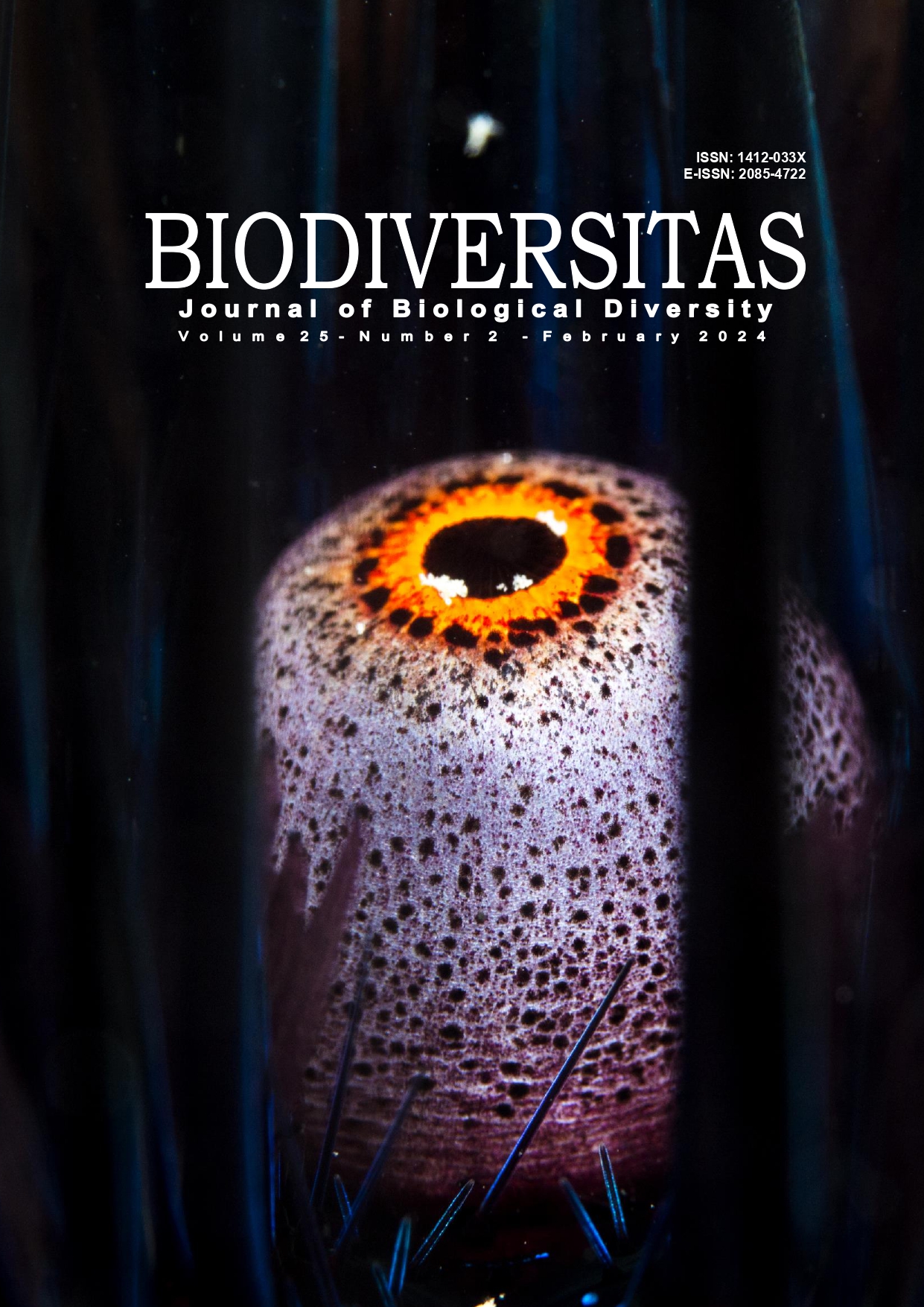Benthic macroinvertebrates as bioindicators to detect the level of water pollution in the upstream segment of Brantas River Watershed in Malang, East Java, Indonesia
##plugins.themes.bootstrap3.article.main##
Abstract
Abstract. Hertika AMS, Sudaryanti S, Musa M, Amron K, Putra RBDS, Alfarisi MA, Hidayat MR, Pertiwi M, Halimah MF. 2024. Benthic macroinvertebrates as bioindicators to detect the level of water pollution in the upstream segment of Brantas River Watershed in Malang, East Java, Indonesia. Biodiversitas 25: 632-643. The Brantas River is the second longest river on the island of Java after the Bengawan Solo River. The current condition of the Brantas River is facing a worrying decline in water quality due to community activities in the surrounding area. This decline can have a negative impact on both aquatic biota and community welfare. To assess water quality, one method involves the use of biological indicators, specifically benthic macroinvertebrates. The objective of this research is to assess the water quality upstream of the Brantas River by using benthic macroinvertebrate as bioindicators. The assessment is based on the community structure, Biological Monitoring Working Party-Average Score Per Taxon (BMWP-ASPT) method and physico-chemical water parameters. This research was conducted at 10 sampling stations with 5 stations located in Batu City and 5 stations located in Malang City. The benthic macroinvertebrate result consists of 8 classes, 53 families. namely Bivalves (2 families), Clitellata (2 families), Gastropoda (5 families), Hirudinea (1 family), Insecta (35 families), Malacostraca (4 families), Oligochaeta (2 families), Polychaeta (1 family), and Turbellaria (1 family). The abundance of macroinvertebrates ranged from 181-2879 individuals/m2, while the diversity index ranged from 0.563-2.988. The evenness index ranged from 0.208-0.870, while the Simpson dominance index ranged from 0.061-0.799. The ASPT range of the upstream segment of Brantas River was found to be between 2.80-6.19, indicating a variation in water conditions from poor to excellent. The physico-chemical water as supporting parameters is still optimal, except for ammonia, total organic matter, and total dissolved parameters that exceed the quality standard. The results of this research show that based on benthic macroinvertebrates as bioindicators, the BMWP-ASPT index and water quality parameters as support, upstream to downstream the Brantas River watershed in Malang City has poor to very good quality. This is due to anthropogenic activities in land use which can disrupt the quality of aquatic ecosystems. Therefore, local governments need to manage waterfall ecosystems well by controlling human activities around them.

